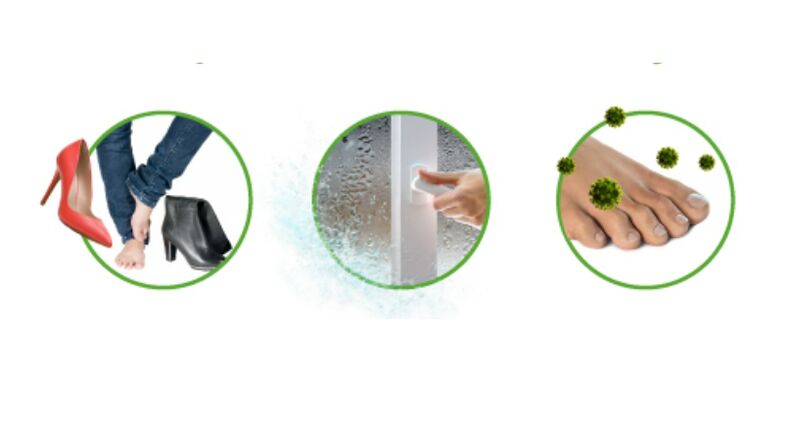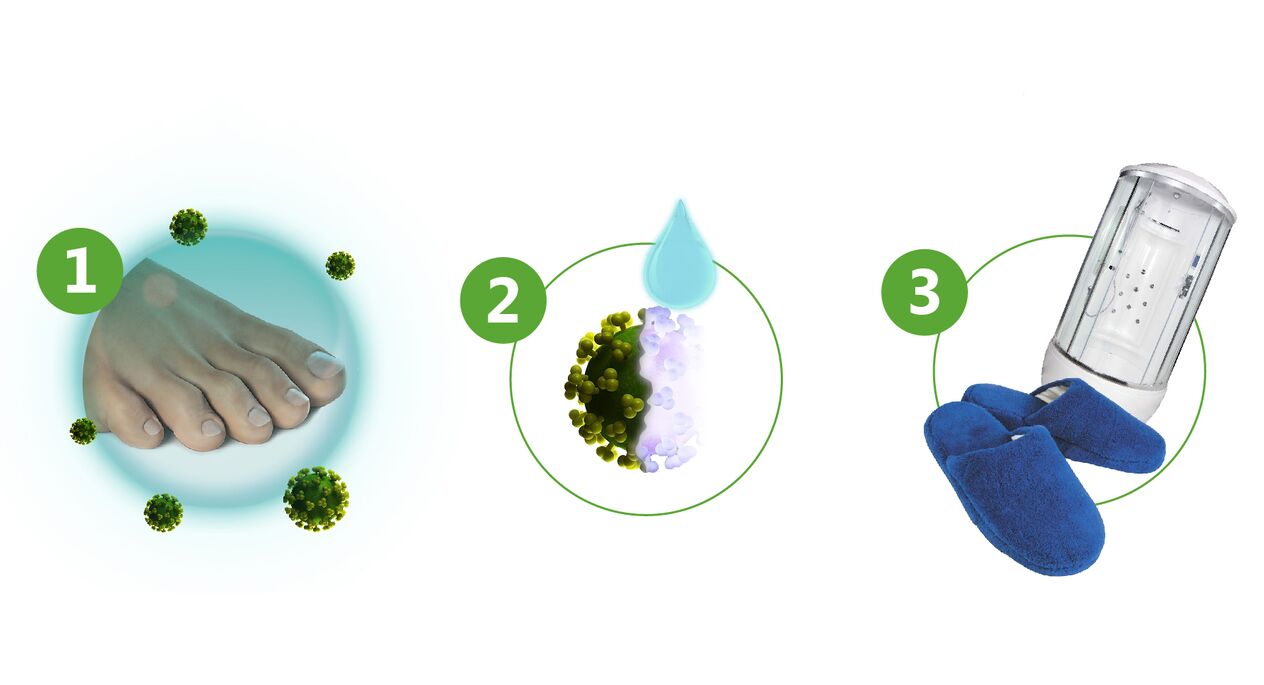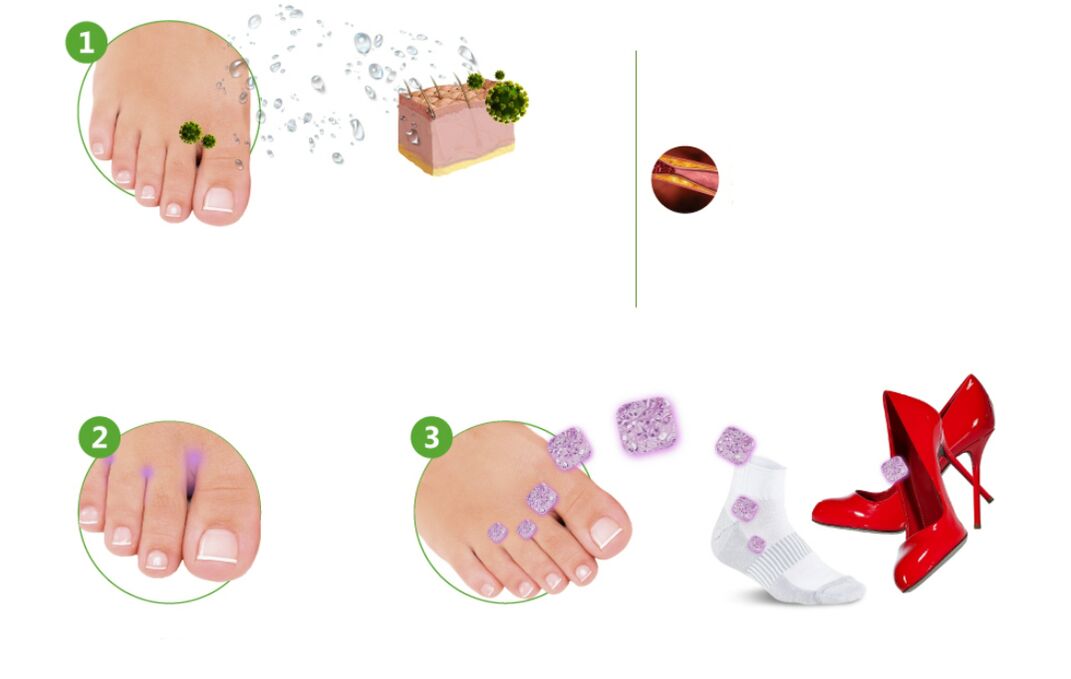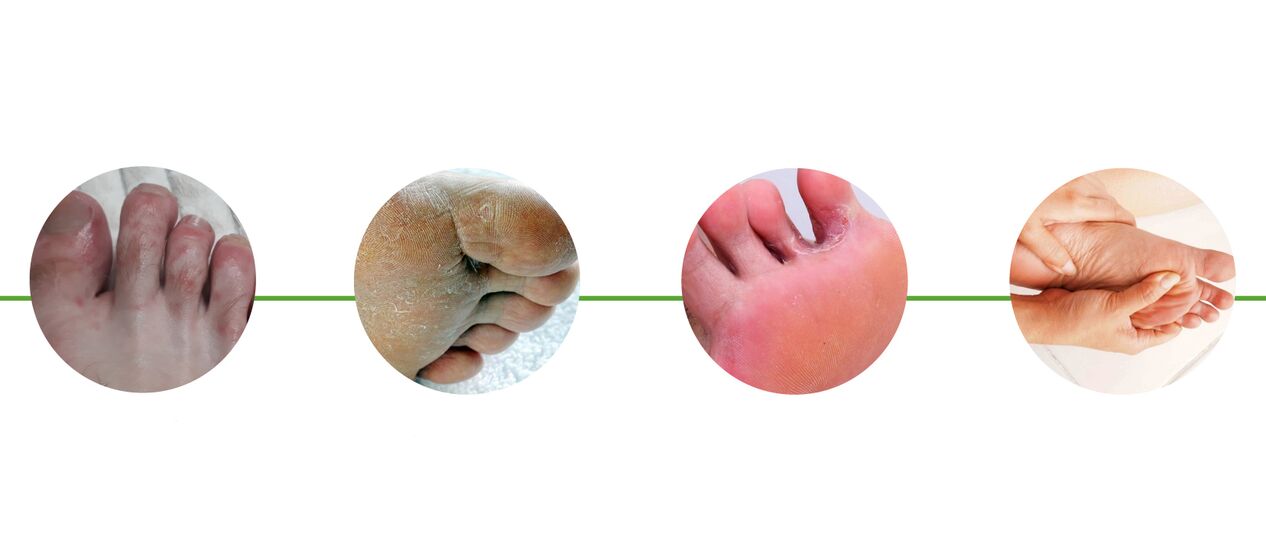One of the most common skin diseases is athlete's foot. It happens to people of all ages and occupations. The highest incidence of fungal disease is in hot shop workers, miners, athletes, and bath workers, and the incidence rate exceeds 60%. Children rarely suffer, but among adolescents, cases of mycosis have increased.
What is Foot Fungal Disease
Foot mycoses are a group of fungal skin diseases that often damage the nails at the same time. These infections cause similar clinical manifestations. They can only be distinguished after microscopic examination of the skin and nails. Dermatomycosis of the feet is a highly contagious disease. It spreads from person to person through household items: carpets in changing rooms, showers and swimming pools, footrests, washbasins and floors in bathtubs and saunas. Using shared footwear is dangerous. The constantly peeling top layer of the skin contains a lot of the fungus itself and its spores. Initially, the interdigital folds are affected and skin itching occurs. In the future, the infection can infect the entire foot and spread to the nails. The disease has a long course and requires continuous treatment. To prevent foot fungus, you can purchase effective preventatives.

Causes of foot fungus
The disease is caused by microorganisms of the genus Trichophyton and, less commonly, fungi and Epidermophyton floccosum:

- Trichophyton rubrum (Tr. Rubrum) causes up to 95% of all disease cases;
- Trichophyton interdigitale (Tr. Interdigitale) was also found in about one-third of patients;
- Epidermophyton inguinalis (E. floccosum) is the cause in 1% of cases.
Increased likelihood of infection under adverse external conditions:
- high humidity;
- tight shoes;
- frequent swimming pools, saunas and other wet places;
- There are patients at home.
Some internal diseases also contribute to the development of fungal infections:
- sweaty legs;
- Immunodeficiency;
- intake of corticosteroids;
- flatfoot;
- Raynaud's disease, peripheral atherosclerosis, endarteritis obliterans, varicose veins;
- diabetes.

what happens during illness
Foot mycosis on healthy skin is rare. Even if the fungus reaches the surface, it cannot penetrate the thick intact epithelium. Under the influence of unfavorable external factors, the epidermis accumulates moisture and relaxes. The fungus penetrates the thickness of the skin and begins to multiply actively. Vascular disease and immune disorders further contribute to this, along with malnutrition and local protective mechanisms in the feet. The growth of the fungus can cause damage, severe peeling, and discomfort in the interdigital area. The rejected epithelium gets into socks and shoes and becomes a source of reinfection. Therefore, in the treatment of fungal diseases, it is necessary to treat the inner surface of the shoe with a preparation with a special antifungal composition.

symptom
Traditionally, there has been this form of foot mycosis, as shown here:
- Squamous: unilateral peeling, slight itching of the arch of the foot. This form is often unrecognized.
- Inter-rubbing: The folds between the fingers are affected, then the process moves to the back of the foot. Weeping cracks appear, accompanied by itching. Bacterial infections may accompany the development of erysipelas.
- Hyperhidrosis: In the arch of the foot, the blisters merge with each other in the light, and then the contents become cloudy. They open up as painful erosions develop. This type is accompanied by itching and pain.
Dermatomycosis of the feet in the acute phase may be accompanied by fever, poor health, headache, and swollen lymph nodes in the groin. When infected with Trichophyton, the nails of fingers I or V are affected, and in the future the process can spread to all nail plates. First, yellow spots appear on the free edges of the nails, which then thicken, loosen and chip. Therefore, to treat foot fungus, you need to use complex action products such as skin and nail lotions.

Disease diagnosis
The identification of the disease is based on the analysis of the external manifestations and the isolation of the fungus from the skin surface. Microscopic examination of the affected epithelium and nails. To accurately determine the type of microorganisms, they are grown on nutrient media. It is necessary to distinguish foot mycoses from non-fungal lesions:
- intermittent;
- eczema;
- psoriasis;
- Hyperkeratosis.
An accurate diagnosis guarantees a good treatment outcome.
Treatment of foot mycosis
Treatment is carried out in two phases. First of all, it is necessary to eliminate acute inflammation and remove the keratinous covering on the feet. The picture shows a warm foot bath with potassium permanganate and a lotion containing a boric acid solution. After the dense epithelium is removed, a cream containing anti-inflammatory hormones and antibiotics is used. After the inflammation subsides, replace these ointments with similar ones. In the second phase of treatment, antifungal ointments and creams (eg, representatives of imidazole antifungal drugs) are used. They should be applied to clean, dry skin 1-2 times a day, rubbing gently. Treat not only the affected area, but also the surrounding surface of the foot. The course of treatment is about one month. Foot mycosis has been successfully treated with medicines, special lotions for the skin and nails, available in pharmacies. The benefits of medicines against fungi:
- High activity against fungi that cause foot mycosis;
- Safety;
- hypoallergenic;
- acceptable price.
This lotion can be used to treat other skin conditions:
- tinea versicolor;
- cutaneous candidiasis;
- erythrasma;
- Secondary bacterial infection in the context of fungal disease.
Use this medicine 2 times a day and gently rub into the affected area. The skin must first be washed with soap and dried, especially between the fingers. The course of treatment continued until symptoms of the disease disappeared and continued for another 2 weeks. The drug was well tolerated. Only occasionally causes skin irritation. He has the only contraindication - the first trimester of pregnancy. Of course, the clotrimazole substance is not used for its individual intolerance. One of the advantages of lotions is that the drug penetrates well into the nail plate, which sets it apart from creams or ointments. Regular use of this medication can have an excellent effect on foot and nail mycosis without using additional funds. Damaged nails require the use of antifungal medication inside.
Meanwhile, with a therapeutic varnish, apply 1-2 times a week until full recovery.
Prevention method
Treatment of fungal infections takes a long time. Foot mycosis requires the use of medication, the cost of which is quite high. Preventing the disease is especially important for people with risk factors for the disease. Athletes, swimmers, and hot-store workers are advised to regularly use antifungal and antibacterial medications, such as sprays or lotions. Such products are safe, do not damage the skin, and do not cause irritation. With regular use, the chances of getting foot fungus are greatly reduced. Undecenoic acid spray can be used to prevent reinfection. For this, the drug must be sprayed on the inner surface of the shoe every month. The active substance in the spray - undecylenic acid - is safe even with prolonged use. It should be applied to dry, cleansed skin of the feet before each trip to swimming pools and other similar places. Contraindications to the use of this drug have not been established. Only pregnant and breastfeeding women should use with caution. It is necessary to eliminate external causes of the onset of the disease:
- wear well-fitting boots and shoes;
- Use high-quality sneakers made of natural materials;
- Wash your feet every day and take care of your nails on time;
- against sweaty feet;
- When bathing, swimming pools, or at the beach, it is best to wear lightweight silicone or rubber slippers.
It is necessary to generally enhance immunity and treat diabetes and vascular diseases.
























